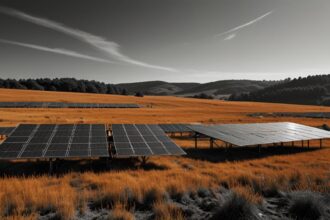BHP Group projects a slight uptick in its operational carbon emissions for the upcoming financial year while staying committed to reducing greenhouse gas emissions, focusing on renewable energy solutions and sustainable practices to achieve carbon neutrality by 2050.
BHP Group Anticipates Temporary Rise in Operational Carbon Emissions
BHP Group, the world’s largest listed miner, announced a projected “small increase” in its operational carbon emissions for the upcoming financial year, according to Graham Winkelman, Vice President for Climate. This forecast comes as BHP reiterates its commitment to cutting operational greenhouse gas emissions by at least 30% from 2020 levels by 2030, despite the non-linear trajectory towards net zero due to growth and technology obstacles.
Key strategies for reducing emissions include increased utilization of solar power and converting the company’s trucking fleet to electric alternatives. However, the growing demand for commodities like Australian iron ore is expected to result in a temporary rise in emissions in FY2024.
BHP aims to support a 30% reduction in emissions intensity in steelmaking, a sector responsible for approximately 7% of global carbon emissions, and a 40% reduction in emissions intensity for BHP-chartered shipping. The company acknowledges that the steel industry’s transition to decarbonized technologies will take multiple decades, pointing to the reliance on emerging solutions like carbon capture, utilization, and storage (CCUS).
For mining operations, BHP favors electric excavators and battery haul trucks over hydrogen or hybrid options. The first electric truck fleet in the Pilbara region of Western Australia is expected by 2028, with electric locomotives slated for deployment by 2030.
Renewable power purchase agreements are being expanded to meet power needs, with additional renewable electricity deployment planned before 2030 to counteract emission increases from growth. While BHP will likely use carbon credits to meet its 2050 net zero target, these credits will not count towards its 2030 goals.
Approximately 10% of executive remuneration is linked to climate-related activities, reinforcing the importance of “methodical and capital-efficient decarbonization” within the company’s overall strategy.













